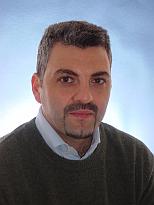Summary and Curriculum Vitae
Lecture
SAR Interferometry and Polarimetry
Due to the capability to provide direct physical measurements, interferometry is the technique that has most pushed the applications of SAR to a wide range of scientific areas and has provided returns to our society in terms of security improvements. For instance, the worldwide most used Digital Elevation Model is a result of a Space Shuttle mission wholly dedicated to SAR interferometry.
Repeat pass differential interferometry and its evolution to Persistent Scatterers Interferometry, which allows accurate localization of ground targets and the monitoring of possible displacements to a mm/yr order, has been a breakthrough for the application of SAR in the risk monitoring area.
Multipass/multiview SAR data are today available for most of the Earth by means of acquisitions carried out by existing sensors over repeated orbits. Such huge amount of data call for the development of new processing techniques that improves the capabilities of the existing technology in terms of accuracy and objectiveness of the measurements. The extension of the interferometric concept to the multidimensional imaging, i.e., 3D and 4D (space-velocity) imaging, is one example along this line.
The tutorial concentrates on 3D imaging, also known as SAR Tomography or 3D SAR focusing, and explains how such advanced SAR imaging is the result of a natural evolution process, started from single-baseline interferometry and evolved to model-based multibaseline interferometry.
The capability of 3D SAR Tomography to accurately locate ground targets, to generate 3D images, and hence to provide a profiling of the scattering distribution also along the elevation direction and hence also to separate and locate different scatterers interfering in the same pixel, will be shown on real data.
Further discussions about the potentialities of 3D imaging associated to the next generation bistatic and multistatic SAR sensors, which will allow acquiring multi-view data simultaneously and repeatedly, are also addressed.
In detail the learning modules are:
- Interferometry
- SAR
- Interferometry concept
- Interferometry & Radargrammetry
- Characteristics & problems
- Diff-Interferometry
- Multipass Diff-Interferometry
- 3D Imaging (Tomography)
- 4D Imaging (Diff-Tomography)
- Detection Performance
- Accuracy
- 5D Imaging (3D+time+temperature)
About the Lectuerer

| Personal information | |
| First name, Surname: | Gianfranco Fornaro |
| Title: | Dr. |
| Organisation: | IREA |
Gianfranco Fornaro graduated, cum laude, in Electronic Engineering at the University of Napoli in 1992 and received the Ph.D. degree in Telecommunications in 1997. Since 1993 he has been with the “Istituto per il Rilevamento Elettromagnetico dell’Ambiente (IREA)” of the Italian National Research Council (CNR) where he currently holds the position of Senior Researcher. He has been Adjunct Professor of Communications at the Universities of Cassino and Naples “Federico II” and of Signal Theory at the University of Reggio Calabria.
Dr. Fornaro has been visiting scientist at the German Aerospace Establishment (DLR), also for within the Italy-Germany cooperation during the SIR-C/X-SAR mission and at Politecnico of Milano. He has been also invited lecturer at the Istituto Tecnologico de Aeronautica (ITA) in Sao José dos Campos (Brazil) and RESTEC (Tokyo).
He has been chairman in several conferences sessions dedicated to SAR processing and SAR interferometry and he has authored almost a hundred of papers (peer-review journals and proceedings of international conferences).
Dr. Fornaro in 2005 served as editor of the “Advances in Interferometric SAR processing” special issue of the EURASIP Journal on Applied Signal Processing (JASP) and was awarded in 1997 of the Mountbatten Premium by the Institution of Electrical Engineers (IEE).
